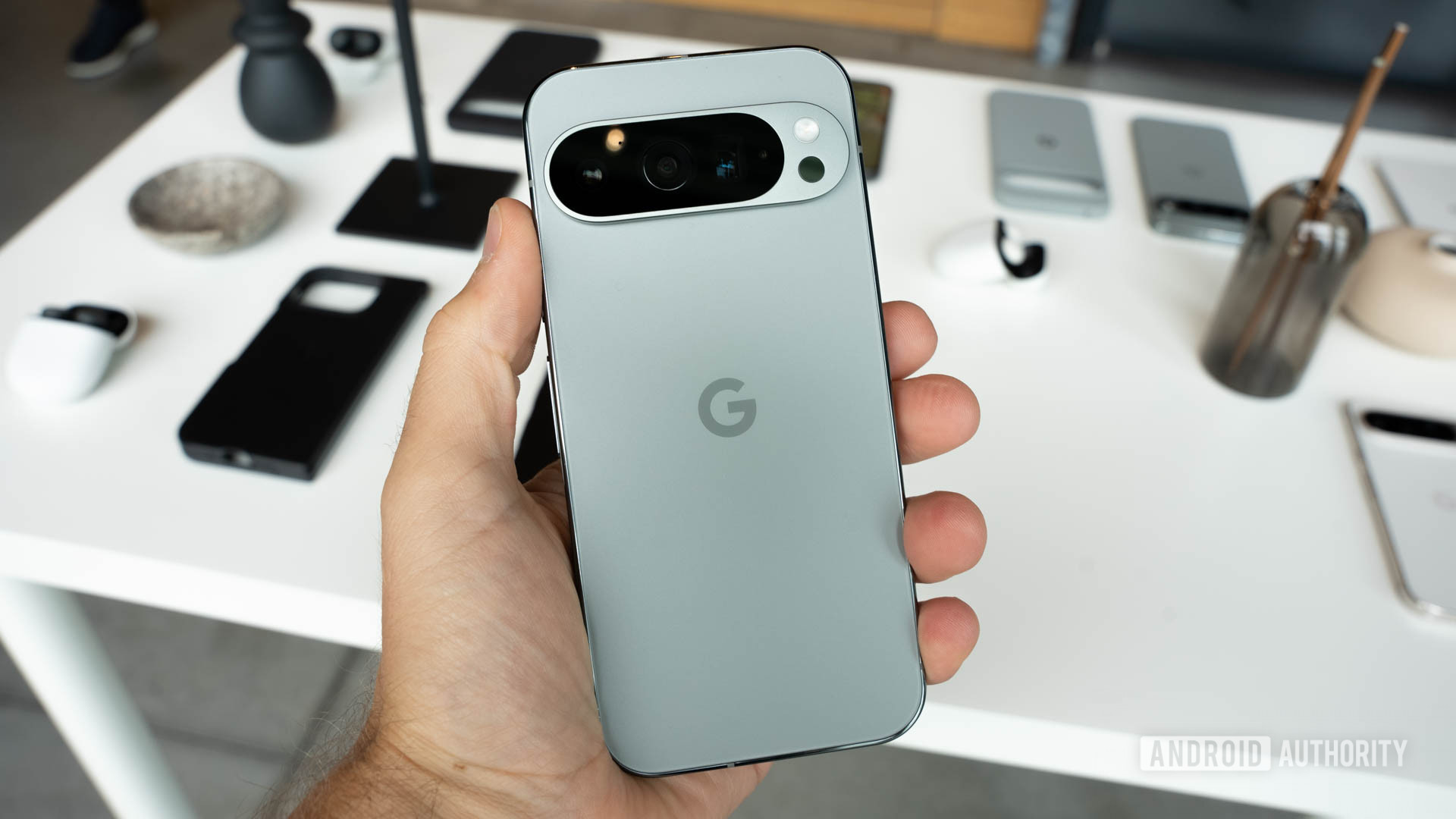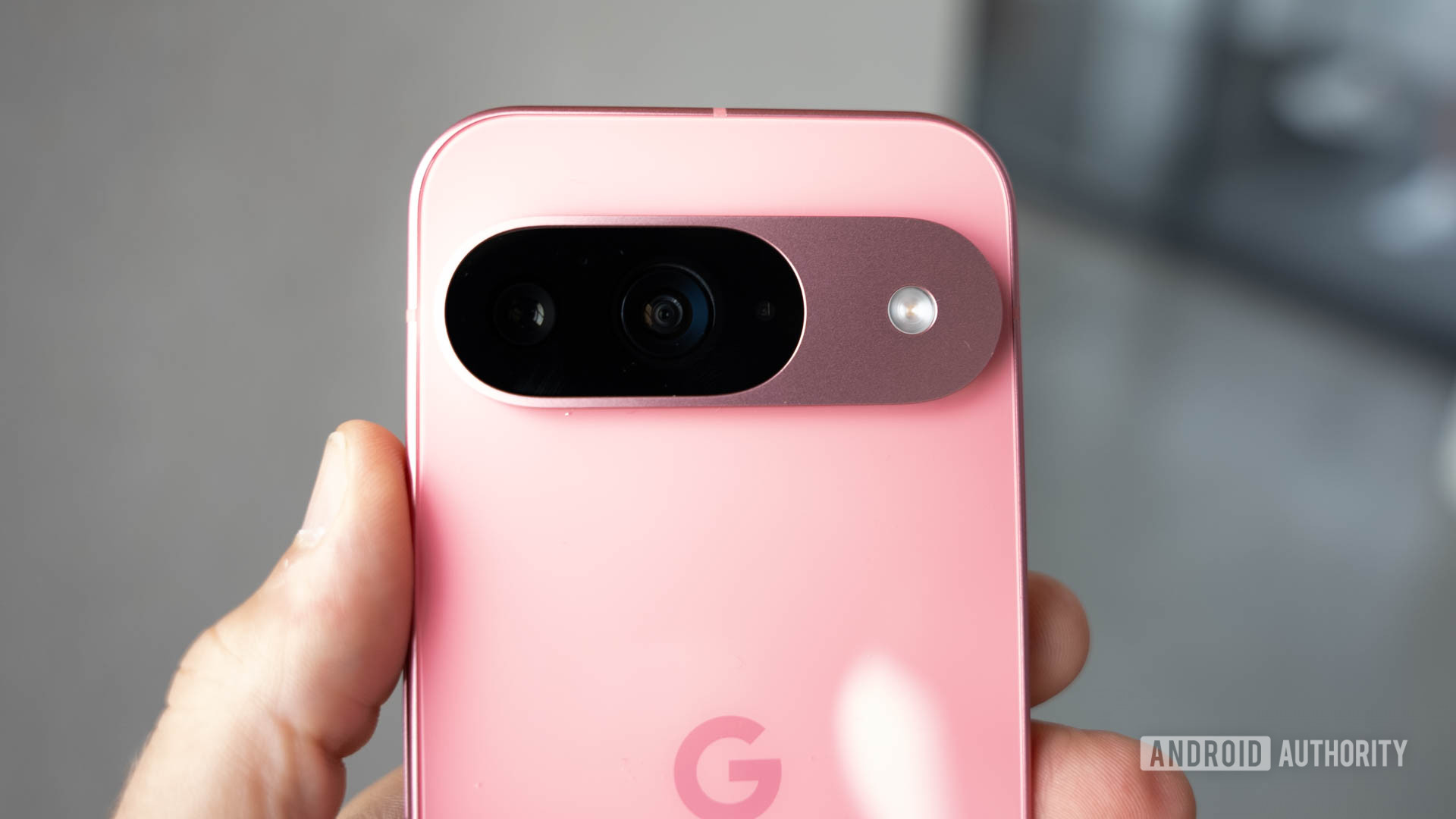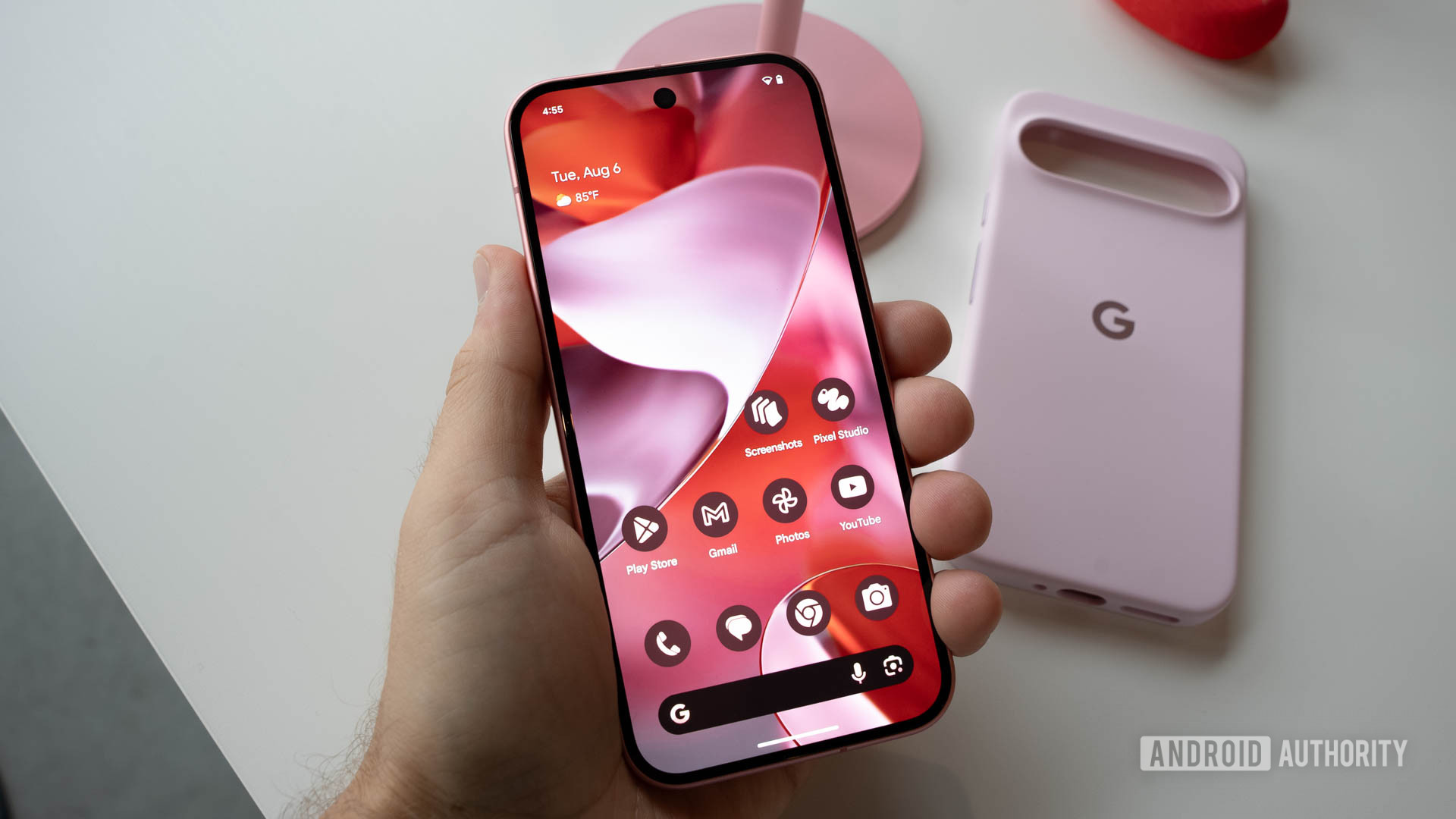Affiliate links on Android Authority may earn us a commission. Learn more.
The Pixel 9 has an iPhone look for an Apple audience
Published onAugust 22, 2024

One of the first things we noticed about the new Google Pixel 9 series is that its design bears more than a trifling resemblance to the Apple iPhone. This isn’t a design choice Google likely made by mistake and may be part of a strategy to lure iOS users over to Android.
A quote from Google senior vice president Rick Osterloh hinted at this approach last week. Discussing where Pixel buyers were coming from, the Google exec explained:
They’re coming from a large number of people, some of whom who’ve (sic) left the market and then also from Apple but ultimately, we think what we’re trying to do is we’re trying to gain Android share overall and that’s my principal goal is to try to improve Android competitiveness, improve our innovation, improve the problems we’re able to solve for users at all tiers. But we’ve certainly had issues in the premium space that we want to try to address.
The point about attempting to gain Android market share overall is telling. One could interpret this as Google being more interested in selling the Pixel experience to iPhone users than to those who are already using an Android device. The rest of the quote seems to support that notion.
This makes sense as Google owns both Android and Pixel. Converting a Samsung user to Pixel adds some extra hardware sales to Google’s bottom line, but convincing an iPhone user to switch also brings that person into the Android ecosystem. It’s a double win. If the latter customer then drifts from the Pixel lineup, they might go with an Android alternative and still add value to Google.
How does Google target iPhone users?

Such a strategy requires a subtle approach. It’s no coincidence that Google’s two big showcase events this year have focused heavily on software.
Such presentations used to revolve around the new phone being unveiled, but we’ve seen a shift on that front. The Google I/O event in May was the debut of the Pixel 8a, but that was almost a side-note compared to the Android 15 demos and AI features on show. The Pixel 9 launch at Made by Google earlier this month also focused more on what the OS would be capable of on the new phone than the specs of the device. Android is what Google really wants to sell, and ideally to non-Android users.
That isn’t to say the Pixel isn’t important in Google’s plan. The tech giant can’t control how Samsung or OnePlus deploys its software, but the Pixel gives Google a hardware platform on which to demonstrate the full potential of Android according to Google’s vision. The Pixel can also be molded to look like the type of Android phone any tech fan might want to use. As it turns out, that type apparently looks quite like an iPhone.
Android is what Google really wants to sell.
By giving an iOS user who’s Android-curious an iPhone-ish device, with three conventional models in the Pixel 9 range rather than the traditional two, Google is building a permission structure for them to make the leap from Apple as seamlessly as possible.
For the Apple-ites who are still on the fence, Google is willing to throw in another incentive. Trade-in values for old iPhones are pretty generous when you’re buying the Pixel 9, especially compared to Samsung handsets. For instance, a base model iPhone 15 commands a higher trade-in credit than the base model Galaxy S24, even though the latter is the more recently released device. This isn’t a new phenomenon — iPhones are often seen as slower depreciating and with a stronger resale market — but it certainly can’t hurt.
Can the Pixel 9 win over iPhone users?

Time will tell, but our instinct is to be skeptical about how successful this approach will be. The Apple brand drives fierce loyalty from its followers, many of whom would probably prefer an iPhone to a handset that looks like one, especially if the imitator is no cheaper than the real deal.
The acid test will be the launch of the iPhone 16 next month, along with its iOS bells and whistles. Some floating voters will have seen what Android 15 is bringing and are waiting for Apple’s offering to compare. Google may feel it has opened the door, but it might take a significant misstep from Apple to convince people to go with the Pixel instead. And Apple doesn’t miss too often.